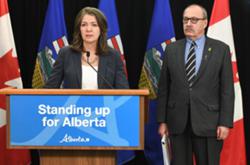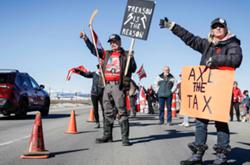dm gillis has gotten used to keeping a close eye on the price of fresh and frozen meats at his local grocery store. Which is unusual for a vegetarian.
But he knows that meat prices are a reliable indicator of when other costs of living may be starting to increase.
“I started to notice, anecdotally, that the price of meat was going up,” gillis says. That was partway through 2021. Shortly afterwards, the veggie-based staples he depends on began to increase in price.
“Things like veggie burgers and veggie products — processed foods from vegetables — they have gone up significantly, like 50 or 60 cents per package,” he says. “And that starts to really impact you when you make about $1,400 a month and you’re locked into that.
“Today, I went out and bought some apples and oranges,” he continued. “A lot of the data on fresh fruits says the price hasn’t really gone up, but I would have to argue with that. After I got some mushrooms, apples and oranges, it cost me 10 bucks. That’s a definite increase.”
gillis, who has been on B.C. disability assistance for the last decade, has seen his share of lean times. The pandemic only brought increased challenges for him and for the roughly 155,000 people receiving income or disability assistance throughout the province.
As a diabetic, gillis needs to be careful about what he eats. A particularly food-insecure day and a miscalculated insulin injection can leave him in insulin shock, a medical emergency that could have severe repercussions.
“It’s a time of hypervigilance, even fear, for me,” says gillis of the final week of each month, when he is waiting for cheque day, the time where people on income and disability assistance are issued a bulk sum for the coming month.
“After my month’s rent and bills are paid, I have $14 a day to live on. The week leading up to cheque issue day is usually one of one meal a day. It’s difficult to manage with diabetes. It’s something those who legislate poverty can’t and won’t try to understand,” he says.
Food insecurity has always been a problem for those living on B.C. income assistance, gillis says, whether on the welfare rate of $935 a month, or the higher rate for people with long-term disabilities, currently a base rate of $1,358 for a single person.
But recent steep increases in food prices have ushered in a whole new reality.
Inflation is on the rise in Canada and across the world. The pandemic, and the disruptions in labour and supply chains it has caused, have resulted in skyrocketing costs of essentials like food, gas and consumer goods.
In October, the consumer price index, an inflation calculator that measures changes in a fixed basket of essential goods and services over time, rose 4.7 per cent from its October 2020 rate.
According to StatsCan data, it was the seventh consecutive month that inflation exceeded the Bank of Canada’s target rate of one to three per cent, and the country’s highest annual rate since 2003 — nearly two decades ago.
What does this mean in plain terms? Nearly every aspect of daily life is getting more expensive. Energy prices — including gasoline and natural gas — have risen by over 25 per cent in the last year.
Cost of meat products has increased by 10 per cent, while that of dairy products and eggs has risen by over five per cent. Housing costs have also risen by nearly five per cent from 2020’s figure, meaning increases for both homeowners and renters.
While this affects almost everyone, it affects people living in poverty disproportionately — especially those living on fixed social assistance incomes.
gillis says the price increases he’s seen make financial decisions incredibly stressful.
“I really have to be careful. There are no real optional things. I can probably buy a small or medium coffee — that’s sort of at least something, to have that option — but mostly it’s heartbreaking,” he says.
He must make calculations about daily and monthly expenses and necessities just like everyone else, but for people living in situations like his, he says, there’s a different layer of precarity and urgency in them.
“There’s fewer and fewer choices, because of the cost of food. And quite often, something will come up — something that wasn’t planned — and that $14 will drop to maybe $10 a day.”
‘We can’t afford housing, full stop’
In spring 2020, the B.C. government announced an emergency COVID-19 supplement to boost both income and disability assistance rates. The extra $300 was distributed from April through December 2020 and was reduced to a permanent $175 rate increase in March 2021.
For Matthew Ford, who lives in Victoria with his wife and has been on disability assistance for the last 40 years, the $300 made a significant difference, as it did for many others on assistance. But once it was removed, challenges re-emerged.
“Back when the government was giving an extra $300 to us, it was easier, but when they stopped, and the prices of food began climbing, I had to start looking around for food banks and other places that support the needy,” Ford told The Tyee.
“In the late summer months, many people were giving out free fruit and vegetables from their gardens, such as apple trees that were ready to be picked, [where] the owners already had enough. But that soon stopped, and now prices are climbing.”
Inflation has also affected those who were already struggling with housing precarity as well.
James Stanley lives in Kamloops, a city that’s seen rapid development in recent years, and where lack of affordable housing is increasingly an issue.
He currently shares a duplex with his brother, who is also on disability assistance, and receives support for utility costs from their father, as both brothers are unable to work. Stanley says the two were recently forced to apply for subsidized government housing, as their rent costs have risen and they can no longer afford to keep their apartment.
“That’s scary — putting your future living arrangements in the hands of BC Housing,” he says. “Our dad is already struggling financially while supporting us with rent and utilities, and it’s a terrible feeling to know you’re putting that kind of burden on somebody.
“We’re expecting another rent increase where we’re living in spring, and given the waiting lists for housing, I just don’t know what we’ll do then. We can’t afford housing, full stop. It’s the first time I’ve ever had to really worry about the possibility of becoming homeless.”
Stanley says that aside from housing, inflation has meant that he has had to cut costs and skip out on essentials. He hasn’t been able to go to the dentist or see an eye doctor for the past year because his government support only covers 50 per cent of specialized medical costs.
He’s also had to postpone his education at Thompson Rivers University for the last year, due to still being in debt from the fall 2020 term.
“I don’t want to sound dramatic, but 2020 was the first time in my life I felt like I had any kind of financial safety net, or that I was able to put away a little bit in case of emergencies,” he says of last year’s COVID supports.
“Even though $300 extra a month on [disability] benefits still had us living well below the poverty line, it’s no exaggeration to say it was life-changing.”
A ‘huge stress to households’
The BC Poverty Reduction Coalition, a group of organizations that advocate to end poverty in the province, is intimately familiar with the realities of inflation and government assistance programs.
“As the cost of living goes up, we’re not actually seeing the rates go up to meet [people’s] needs,” says Rowan Burdge, the group’s provincial director.
“Inflation is a huge stress to households. [For] folks who have disabilities, for example, the cost of living with a disability is actually higher than the cost of living for non-disabled folks, so it has a huge impact on people’s ability to access the tools that they need to get around. Transit, mobility, accessing the food banks — all of that is tied in.”
Burdge says that even though the $175 permanent rate increase and the $300 temporary COVID supplement were welcome, they’re still not enough to meet the needs of a group of people living well below the poverty line.
“We think of the poverty line as the lowest amount you need to survive, and folks aren’t even getting that,” they say. “In a province that has a lot of money and could easily do a lot better.”
Over the pandemic, the Poverty Reduction Coalition partnered with SFU professor Dr. Tammara Soma, co-founder and research director of the university’s Food Systems Lab, to conduct a study on the connection between food insecurity and transportation access in B.C.
Soma’s 2020 study found that of the nearly 100 participants — people who regularly accessed non-profit food hubs like food banks or neighbourhood houses — over 80 per cent considered these food sources an important part of their overall diet. Over 66 per cent said they found it difficult to make ends meet, regardless of whether they were receiving social assistance.
In an emailed statement, Minister of Social Development and Poverty Reduction Nicholas Simons emphasized that the NDP has raised social assistance rates three times since being in government — the April 2021 $175 increase being only the latest effort.
He noted that the province’s poverty-reduction strategy favours a holistic approach that includes raising the minimum wage, instituting five days of paid sick leave, making child care more affordable, and investments in housing affordability.
“The province, and the Ministry of Social Development in particular, will always be looking for ways to reduce poverty, while not precluding future increases to income supports, through other initiatives aimed at reducing the cost of living,” he said.
While Burdge and the Poverty Reduction Coalition acknowledge that the recently instituted five paid days of sick leave are a step forward, they say they are not enough to address a provincewide crisis.
“That’s great, we’re the first province to have done that,” says Burdge of the announcement. “But it’s still nowhere near the 10 days that was the recommended amount.
“We have a plan for $10-a-day child care, but that’s not actually happened yet. It’s becoming more and more challenging for folks to access food. We’re calling on the government to raise the rates to at least the poverty line, but the reality is that we need far more than that for people that are struggling.”
Daily insecurity continues
gillis hasn’t just been keeping an eye on the rising costs of veggie burgers and meat in recent months. He’s also had his eye on the Bank of Canada’s inflation calculator. Just recently, he entered in his disability amount from the last year to see how it would fare in 2021’s calculation.
“There is an actual dollar amount that we can look at and say: that’s how much more it is going to cost us to live. And it’s really not going to come from anywhere,” he says.
Asked whether he believes another assistance raise may come, he is unequivocal: “No, [it] won’t. And again, that’s been my lived experience. They don’t address these things according to the rate of inflation. And even if they did, we’re already so far behind that it may not make a difference right now.”
He says that although disabled people and people living in poverty have been greatly impacted by the COVID pandemic, they are “probably quite far down the list in terms of priorities.” It’s meant widespread daily insecurity, and probably more to come.
“There are certain areas where food providers have taken lower margins, like say in fast food,” he says. “At Burger King, the prices remain pretty stable. So I think that’s probably where some folks in my situation are going to be going. The outcome is that there’s going to be a lot more unhealthy foods, instead of going hungry, which would be the other option. The old cliché of generic Kraft Dinner — that kind of thing — starts to come true again and reveal itself.”
James Stanley feels the same resignation and weariness.
“I could echo the chant of ‘bring back the 300,’ and I do, but I think we could do so much better, too,” he says.
“I mean to be frank: disability benefits already weren’t enough to survive on before COVID. It’s not just a case of living cheque to cheque, it’s figuring out how to scrape together enough just to survive. There’s nothing left over at the end of the month, and there’s no saving up.” ![]()
Read more: Health, Local Economy, Rights + Justice, Food
















Tyee Commenting Guidelines
Comments that violate guidelines risk being deleted, and violations may result in a temporary or permanent user ban. Maintain the spirit of good conversation to stay in the discussion.
*Please note The Tyee is not a forum for spreading misinformation about COVID-19, denying its existence or minimizing its risk to public health.
Do:
Do not: